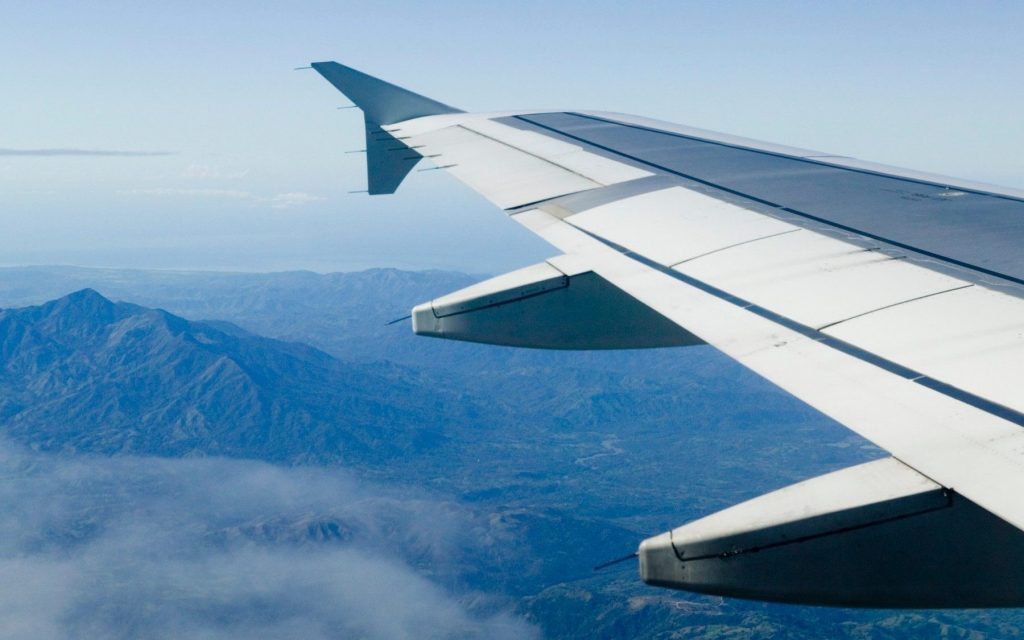Flying with a power bank: The ultimate guide for happy travels
Flying with a power bank
Power banks have unquestionably became an essential travel companion, yet taking them through an airport can quickly become a stressful situation due to the often confusing rules about travelling with spare batteries on planes. This guide will give you all the information you need about flying with a power bank.
First of all, it is important to understand that this is a high stakes affair, because getting the rules wrong could result in landing at your destination without your handy power bank, resulting in a dead phone when you need it the most.
Can I take my power bank on a plane?
Yes, as long as the power bank meets certain size requirements and that you take it as carry-on luggage into the plane with you.
The Civil Aviation Authority of New Zealand defines power banks as spare batteries, meaning that a power bank with a battery capacity less than 100-Wh (Watt-hours) can be taken as carry-on luggage. But remember, a power bank cannot be in your checked-in luggage no matter how small it is.
A power bank must go as carry-on just in case something happens. We all remember the infamous ‘hoverboard’ explosions of 2015, which created awareness of what can go wrong with lithium batteries. Although there is an extremely low risk of this happening with a power bank, the potential consequences can be dire if this happens in the cargo hold. Whereas in the plane cabin, crew have emergencies procedures to deal with anything going wrong.
If you accidentally have put your power bank into your checked in luggage, then it will more than likely be confiscated by the airline prior to take-off. If this happens, it is best to contact your airline straight away, however chances are that you will not be able to get it back.
In some instances, a power bank with a capacity of up to 160-Wh can be taken with prior approval from your airline. Nevertheless, before flying with a power bank it is always recommended to check your airlines specific rules, such as Air New Zealand’s limits for lithium batteries or the Qantas dangerous goods guideline.
It is important to ensure that the battery capacity of each power bank is clearly written on the power bank so that airport security can check that it is within the limit. If the battery information is not written on the power bank or is not clear, then airport security may not allow it through.
How many power banks can I take with me?
According to an International Air Transport Association article, an upper limit for spare batteries was put into force in January 2018 meaning that a passenger can carry up to a maximum 20 spare batteries that are rated under 100Wh. This upper limit may vary between airlines, and more spare batteries can possibly be taken with prior approval from your airline.
What does Wh and mAh stand for?
Wh is the abbreviation for Watt-hours. This is a measure for how much energy a power bank can store and is relative to the amount of Lithium in the battery. Similarly, mAh is the abbreviation for milliamp-hour, which is also a measure for the capacity of a power bank. However, the mAh of a battery does not directly relate to the amount of Lithium in the battery. Therefore, mAh is converted to Wh for checking whether or not a power bank can be taken on a plane.
Some airlines, particularly small charter planes, may ask for the grams of lithium metal in a power bank. It is uncommon to be asked this, however if you are, this calculator can be used: https://batteryguy.com/kb/knowledge-base/lithium-content-calculator/
How do I calculate the Wh of my power bank?
Watt hours can be calculated by multiplying a batteries milli-Amp hours (mAh) with its Voltage (V) and dividing by 1,000:
Wh = (mAh x V) / 1,000
For example, our SunSaver power banks have the following Wh ratings:
SunSaver 10K (10,000mAh and 3.7V):
Wh = (10,000 x 3.7) / 1,000 = 37Wh
SunSaver Classic (16,000mAh and 3.7V):
Wh = (16,000 x 3.7) / 1,000 = 59.2Wh
SunSaver 24K (24,000mAh and 3.7V):
Wh = (24,000 x 3.7) / 1,000 = 88.8Wh
Because these ratings are all below 100Wh, every SunSaver power bank is permitted as carry-on for most flights. For example, a 100Wh power bank has a capacity of 27,000mAh. If you don’t trust your maths skills, simply let this online battery capacity calculator do the work for you.
Other things to know about flying with a power bank
Some airlines are now restricting the use of power banks on planes. The reason is that power banks are safest when not in use. Most airlines will have USB power sources available for charging your phone.
For peace of mind, it is best to charge your phone and gadgets before boarding the plane and check with the airline before using a power bank during the flight.
What is a Lithium Battery and why are they so restricted?
A lithium battery consists of an Anode (negative electrode) and Cathode (positive electrode) separated by an electrolyte. The battery generates charge by positively charged Lithium ions moving from the Anode to the Cathode, providing electrons to an external electrical circuit in the process.
The electrolyte material plays an important role in regulating the flow of Lithium ions between the electrodes. Because if the Anode and Cathode were to ever touch, the flow of lithium ions would be so rapid, that the amount of electrons being discharged at once could have enough power to start a fire!, hence the restrictions.
If you want to find out more about Lithium Batteries’, you can read this article by batteryuniversity.com.

